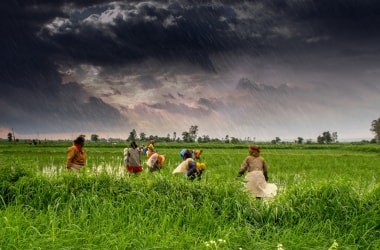
The Cabinet Committee on Economic Affairs chaired by the Prime Minister Shri Narendra Modi, has approved the continuation of Rashtriya Krishi Vikas Yojana (RKVY) as Rashtriya Krishi Vikas Yojana- Remunerative Approaches for Agriculture and Allied sector Rejuvenation (RKVY-RAFTAAR) for three years i.e. 2017-18 to 2019-20.
The financial allocation of the scheme will be INR 15,722 crore with the objective of making farming as a remunerative economic activity through strengthening the farmer’s effort, risk mitigation and promoting agribusiness entrepreneurship.
RKVY-RAFTAAR funds would be provided to the States as 60:40 grants between Centre and States (90:10 for North Eastern States and Himalayan States) through the following streams:
(a) Regular RKVY-RAFTAAR (Infrastructure & Assets and Production Growth) with 70%of annual outlay to be allocated to states as grants based for the following activities:
i. Infrastructure and assets with 50% of regular RKVY-RAFTAAR outlay.
ii. Value addition linked production projects with 30% of regular RKVY-RAFTAAR outlay.
iii. Flexi-funds with 20% of regular RKVY-RAFTAAR outlay. States can use this for supporting any projects as per the local needs.
(b) RKVY-RAFTAAR special sub-schemes of National priorities - 20% of annual outlay; and
(c) Innovation and agri-entrepreneur development through creating end-to-end solution, skill development and financial support for setting up the agri-enterprise -10% of annual outlay including 2% of administrative costs.
The scheme will incentivise States in enhancing more allocation to Agriculture and Allied Sectors.
This will also strengthen farmer’s efforts through creation of agriculture infrastructure that help in supply of quality inputs, market facilities etc.
This will further promote agri-entrepreneurship and support business models that maximize returns to farmers.
RKVY: Know More- Rashtriya Krishi Vikas Yojana (RKVY) is a continuing scheme under implementation from XI Five Year Plan.
- The scheme provides considerable flexibility and autonomy to states in planning and executing programmes for incentivising investment in agriculture and allied sectors.
- States initiate the process of decentralized planning for agriculture and allied sectors through preparation of District Agriculture Plans (DAPs) and State Agriculture Plan (SAP) based on agro-climatic conditions, availability of appropriate technology and natural resources to ensure accommodation of local needs, cropping pattern, priorities etc.
- RKVY has also enabled adoption of national priorities without affecting the autonomy and flexibility of States through sub-schemes.
- National priorities like Bringing Green Revolution to Eastern India (BGREI), Crop Diversification Program (CDP), Reclamation of Problem Soil (RPS), Foot & Mouth Disease - Control Program (FMD-CP), Saffron Mission, Accelerated Fodder Development Programme, etc. are being implemented through the window of RKVY.
- During XI Plan and XII Plan, States have taken over 13,000 projects in agriculture and allied sector through State Agriculture Department as Nodal Implementing Agency.
- The interim report of RKVY evaluation done by Institute of Economic Growth summarizes that the income emanating from agriculture measured as the agricultural state domestic product (AGSDP) is higher in the post-RKVY period than in the pre-RKVY period.
- Further, almost all the states registered higher value of output from agriculture and allied activities in the post-RKVY period.
- Continuation of RKVY-RAFTAAR will therefore keep the momentum of agriculture and allied sector growth.